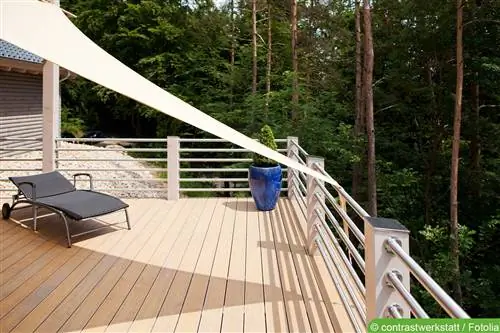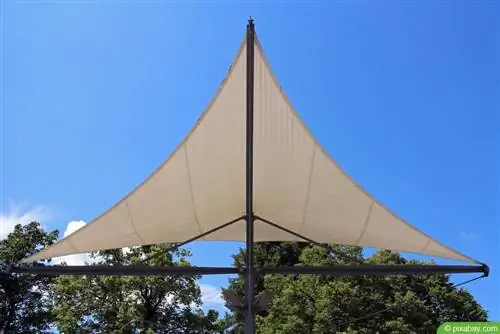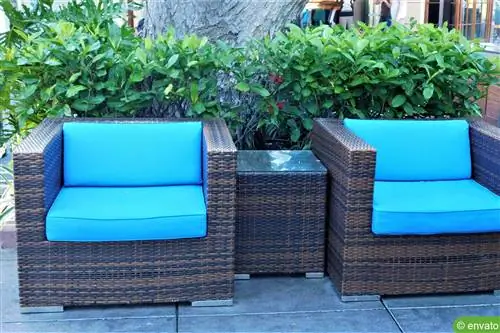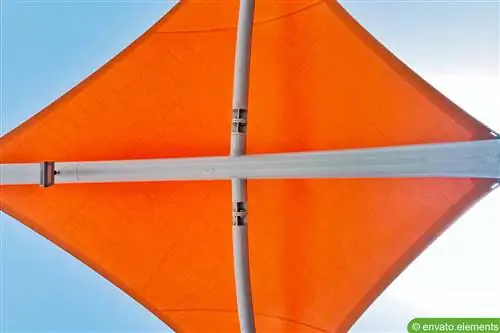- Author admin [email protected].
- Public 2023-12-17 03:39.
- Last modified 2025-01-24 12:45.
Storm safety is an important aspect when planning a sun sail. Various criteria must be taken into account so that it remains usable in windy conditions. You can find the most important information in our article.
Windproof awning made to measure
Sun sails can be a big problem in high winds. They tear or fly away, pose a possible danger to pedestrians and traffic, and may even need to be replaced. For this reason, a storm-proof sun sail must be chosen correctly before purchasing it. The focus is on the material. To reduce susceptibility to wind, a custom-made sun sail from Sonnenmax with the following properties is recommended:
- open-pored
- triangular
- small to medium size
Why open-pored?
Custom-made sun sails made from open-pored materials such as HDPE (high-density polyethylene) are not completely closed. Rain and wind penetrate through the material, which means the sail does not become a wind catcher. If you live in a stormy area with frequent wind speeds of 7 (50 to 61 km/h) on the Beaufort scale, you should use an open-cell shade sail.
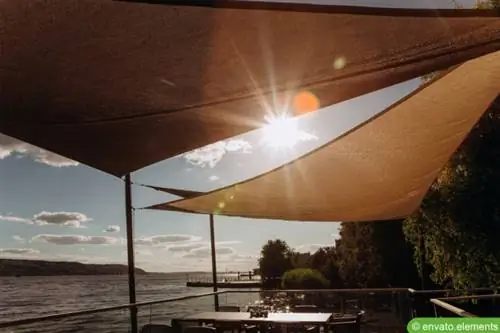
Small & triangular
The other requirements ensure that there is less catchment area for the sail. A triangular, smaller sail, for example, catches less wind than a rectangular model in XXL format.
Note:
DIN-tested sun sails offer high durability and are ideal for high wind speeds. Models with DIN EN 1176 certification are recommended, as these are primarily used for all-season sails.
Attach awning to make it storm-proof
The storm-proof attachment of the sun sail depends on the following points:
Anchoring
When anchoring, you should either use steel posts set in concrete (free area), heavy-duty dowels or threaded rods that are firmly fixed in a facade. Together with bulkhead plate or roundel reinforcements on the sail corners, the sail does not tear even in storms.
Construction
Ideally it is a hyperbolic montage. Hyperbolic sun sails are designed so that one part is placed lower than the other. Wind can therefore be passed on effectively because it does not collect below the sail.
Location
A suitable location can prevent a lot of planning headaches. Preferably choose a spot on your property that is better protected from strong winds, such as in front of a wall.
Tilt angle
The angle of inclination of the sun sail should be at least 14 percent. This means that the wind is transported faster under the awning and reduces the size of the area that serves as a wind catcher. You can even tilt one side more to enhance this effect.
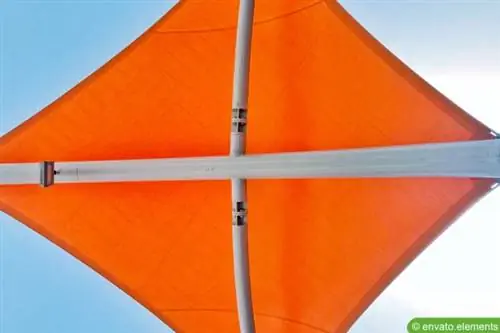
Helpful utensils
You can improve the storm protection of the awning with additional utensils. Since the majority of available sun sails can be rolled up or moved, you can rely on the following components:
- Safety relays
- Wind Monitor
These are devices that either retract the sun sail when wind speeds are too high (wind monitor) or loosen the brackets (relay). As effective safety equipment, any sun sail can actually be equipped with them.
Alternative: all-season sailing
The most expensive variants of a sun sail include all-season sun sails. This variant involves awnings that remain in place all year round and do not have to be taken down in the event of a storm. They can withstand high wind speeds and even permanent snow masses. The implementation of these sun sails requires the help of a specialist as they must be precisely adapted to the specific conditions of the location. For this reason, the smallest variants start at prices of around 3,000 euros and can easily cost over 12,000 euros, depending on the configuration and installation effort.
Note:
All-season sails are particularly noticeable because of the clearly visible guy ropes, which ensure effective storm protection. You need to allow extra space for these so that they do not become tripping hazards.
Frequently asked questions
What kind of damage to the sun sail is possible from wind force 7?
In the case of a year-round sail, you don't have to worry about damage. Their structure means they are equipped to withstand high wind speeds. If it is a classic, storm-proof sun sail, damage to the masonry and fastenings can occur. The sail itself will usually not tear.
Can storm-proof awnings be implemented on the roof terrace?
Yes. For this purpose, the masts of the sun sail are fixed in special cubes weighing at least 100 kilograms. Due to the immense weight, you must check beforehand what the maximum load on the roof terrace can be in order to prevent damage to the building.

